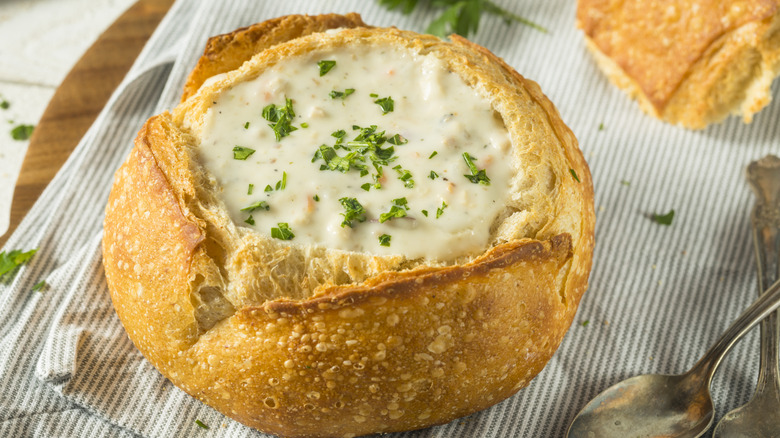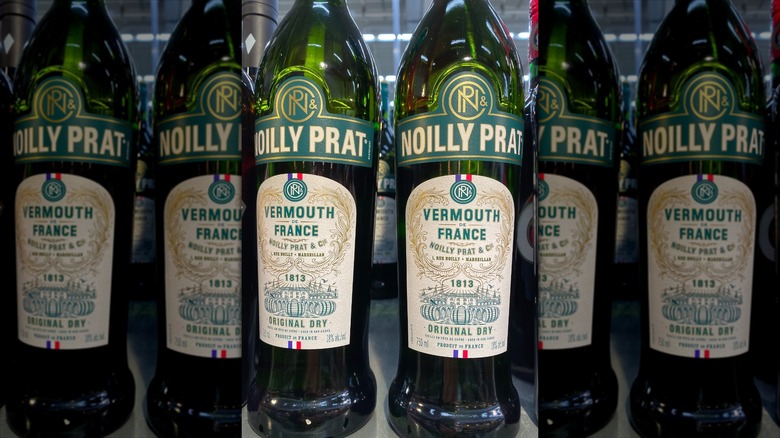The Ingredient That Will Change Your Clam Chowder Forever
If you're from New England, chances are a good deal of your meals have started out with a bowl of rich, creamy clam chowder (and definitely not the red variety).
Clam chowder is seemingly simple, with a base of salt pork or bacon, butter, and cream, as well as celery and onions. The obvious additions are clams (often littlenecks) and potatoes. Some may add garlic and a bit of heat from cayenne like in this recipe by Chef Michael Korn, while others incorporate spiciness from jalapeños as well as adding layers of flavors from herbs like Chef Matthew Jennings in his recipe.
While some may be purists when it comes to their clam chowder, the only real rule is that tomatoes are never included in the concoction, a point dramatically made in 1939 through an attempt to criminalize tomatoes in clam chowder (via New England Historical Society).
So what should you be adding to your clam chowder recipe to change it up in the best way? Two words: dry vermouth.
Taste Cocktails defines vermouth as a fortified wine that can feature a variety of botanical blends. While dry vermouth typically is known for its inclusion in martinis (specifically the upside-down martini, one of Julia Child's favorite alcoholic beverages), it is also a popular ingredient for cooking.
Why you should use dry vermouth in your clam chowder
Auguste Escoffier School of Culinary Arts suggests experimenting with the botanical beverage in fish dishes, specifically, but also mentions chicken and pork as options as well. The school then notes that vermouth can be used as a substitute for wine in many recipes. Other flavors infused into vermouth, that are not present in wine, are what help to build a unique flavor profile in a traditional dish.
Another benefit to using vermouth, according to Vinepair (and Julia Child), is that it is less acidic than white wine, better balancing a dish. Vinepair also notes that vermouth is a superior choice over wine given its ability to last longer once opened.
In terms of the quantity of vermouth to use, it can come down to personal preference. Chef Alex Guarneschelli packs a punch with her addition of a full cup of vermouth in her clam chowder recipe, while Martha Stewart uses only a quarter cup in her mixed seafood chowder (a close cousin to clam chowder). As with any culinary experimentation, it's best to remember that you can always add more, but you can never take an ingredient back out.
If you're new to the world of vermouth, or to cooking with alcohol, check a guide to help decide which vermouth's flavor profile will work best, and make sure to determine how long to simmer that soup to make sure your chowder isn't just a savory cocktail slurped with a spoon.

